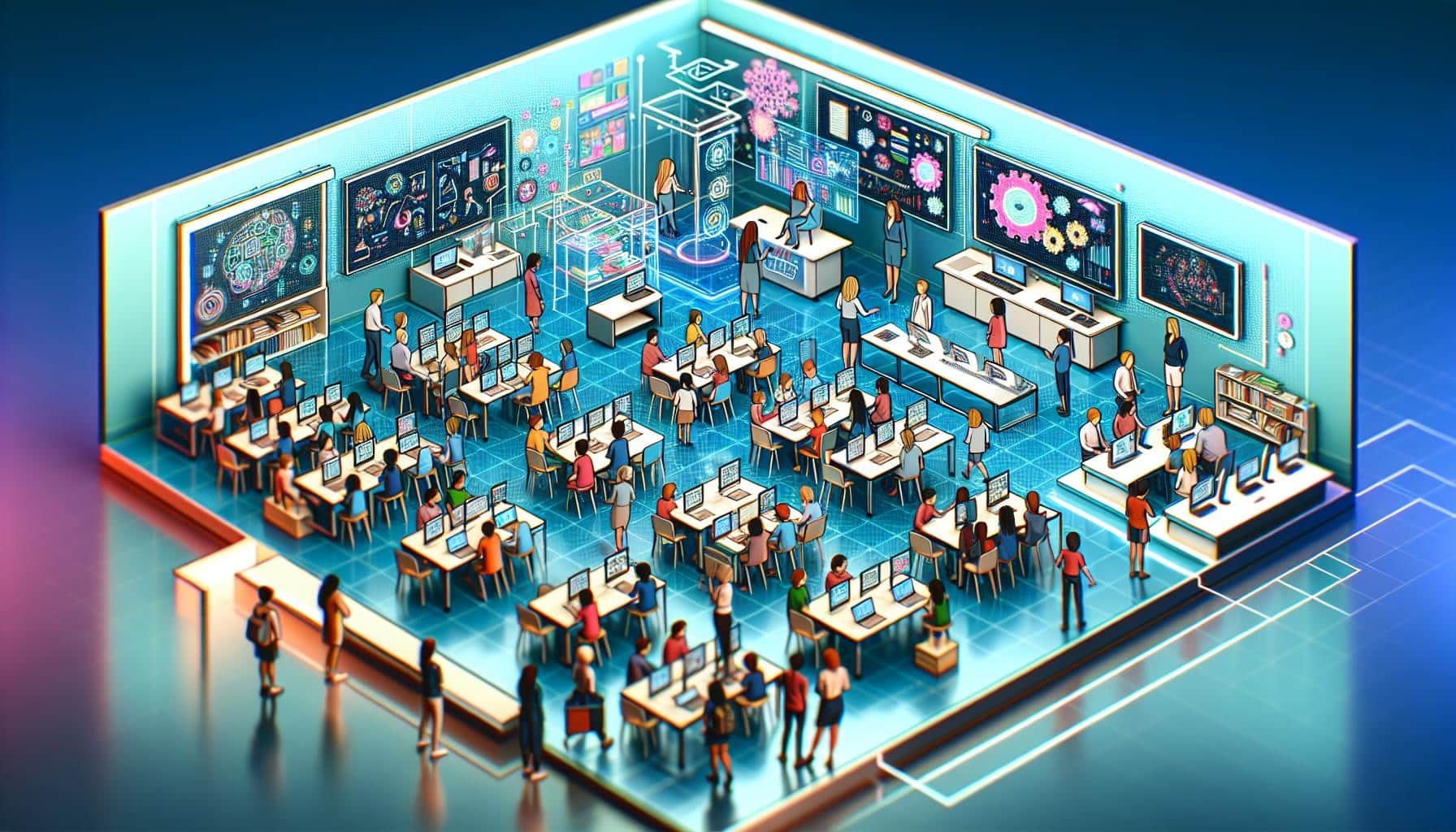The Growing Use of AI Tools in K-12 Classrooms
It’s been a year since ChatGPT—an AI-powered tool that can seemingly answer any prompt—burst onto the K-12 scene, and teachers are slowly embracing the tool and others like it[1]. According to a recent survey conducted by the EdWeek Research Center, one-third of K-12 teachers have used artificial intelligence (AI)-driven tools in their classrooms[1]. While 21 percent of those teachers said they’ve used these tools a little, 10 percent said they’ve used them some, and 2 percent said they’ve used them a lot[1]. This data indicates a growing interest in AI tools among educators and highlights the potential impact of this technology in K-12 education.
Teachers’ Perspectives on Using AI in Education
Educators who have used AI tools in their classrooms emphasize the importance of responsible use and ensuring that students understand how to use these tools effectively. One teacher noted that AI can be a powerful search engine and assistant, saving valuable time and making it a game-changer for districts with limited resources[1]. Another teacher highlighted the need to educate students about the difference between creating something from scratch and using AI to generate content[1]. By encouraging critical thinking and editing skills, teachers can ensure that AI tools enhance, rather than replace, students’ learning experiences.
Benefits and Challenges of Integrating AI in Schools
Experts believe that AI tools have the potential to transform K-12 education, offering personalized learning experiences for students and professional development opportunities for teachers[1]. Additionally, generative AI tools can help districts become more efficient and fiscally responsible[1]. However, there are challenges to overcome. Many teachers are still unfamiliar with AI technology, and there are concerns about students using AI tools to cheat or unknowingly generating inaccurate or biased responses[1]. These challenges highlight the importance of providing training and support for educators to effectively integrate AI into their classrooms.
Practical Applications of AI Tools in the Classroom
Teachers have found various practical applications for AI tools in their classrooms. They have used tools like ChatGPT to create lesson plans, provide feedback on assignments, build rubrics, compose emails to parents, and even write letters of recommendation[1]. These AI tools can streamline administrative tasks and provide valuable assistance to teachers, allowing them to focus on individualized instruction and student support.
Promoting Ethical and Responsible Use of AI in Education
Some teachers have encountered ethical concerns when using AI tools, such as students using the technology to cheat on assignments[1]. Schools and districts are proactively addressing these concerns by developing acceptable use policies and implementing procedures that promote ethical use of AI[1]. Additionally, some educators are advocating for professional development sessions on AI tools to ensure that teachers have the necessary training to use AI effectively in their classrooms[1]. By fostering a culture of responsible use, educators can harness the potential of AI while maintaining academic integrity.
In conclusion, the use of AI tools in K-12 education is steadily growing, with teachers gradually embracing this technology. Educators see the potential of AI tools to enhance teaching and learning experiences, but they also recognize the need for responsible and ethical use. By educating students about AI, providing training for teachers, and implementing safeguards to prevent misuse, schools can effectively integrate AI tools into classrooms and maximize their benefits for students and educators alike.
References:
[1] What Teachers Say About Using Artificial Intelligence in Their Classrooms
Analyst comment
Positive news: The growing use of AI tools in K-12 classrooms is seen as a positive development by educators, highlighting the potential impact of this technology in education. It offers personalized learning experiences, efficiency, and support for teachers. There are challenges to overcome, such as teacher unfamiliarity and concerns about misuse, but with training and support, AI can be effectively integrated into classrooms. As a result, the market for AI tools in K-12 education is expected to expand as more educators embrace this technology.













